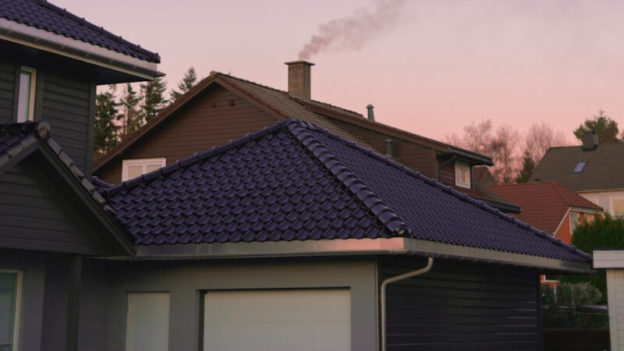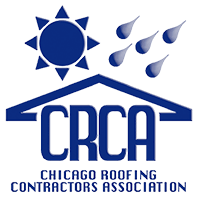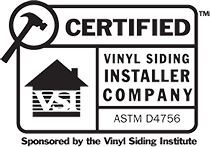Rolled roofing is incredibly popular in the United States. It offers an affordable roofing option at an affordable price. It’s easy to install and repair. However, rolled roofing has a shorter lifespan than other, more expensive roofing materials. They often require more frequent repairs to provide the protection and performance you need.
Rolled roofs are great, but they don’t last forever. One of the most common issues with rolled roofs is they develop holes that need patching.
This article discusses how to patch a rolled roof and gives you a few other insights worth knowing.
For most people, the thought of fixing your roof by yourself is a lot. Not many homeowners are used to getting up on top of their homes, much less fixing a hole in their roof.
Still, minor roof repair sits well in the realm of DIY possibility.
While certain repairs and maintenance are best left to the professionals, how to patch a rolled roof is something everyone can learn.
With the right tools and a little bit of patience, you can learn how to patch yoru roof and save yourself a good deal of money without that much time.
Let’s explore what you need to know about patching a rolled roof and where to get started.
DIY Vs. Roof Repair Company
Everything is relative. The money you’ll save on patching a hole is worth it in some instances. In others, it’s not worth the stress.
One of the main reasons roof repair companies exist is they do what you don’t want to do. So if getting up on your roof to patch a hole sounds like a miserable time, especially on the weekend or after work, then hiring the job out is probably the best call.
However, patching is surprisingly simple and done right; homeowners can match the quality of a trained professional without risking roof performance long-term.
Ultimately, it’s up to you. All we’ll say is that it’s hard to beat the feeling of satisfaction that comes with fixing your stuff.
Safety First
Before we get into the nuts and bolts of rolled roof maintenance, let’s emphasize safety first.
Obviously, your typical roof repair is done at height. You’ll be 10 feet high in the air or more. Odds are, you’re not going to invest in a full safety harness, but just make sure you do the following:
- Ask a friend, relative, or neighbor to spot you on the ladder.
- Wear shoes with a good grip on the roof.
- Avoid working on your roof when it’s wet or windy.
- Move slowly.
There’s always something more or better you can do with regards to safety. Above all, use common sense and don’t take unnecessary risks. Now, on to the how to patch a rolled roof step-by-step guide!
How to Patch a Rolled Roof? What Is a Rolled Roof Anyway?

Roll roofing is another name for “roof underlayment.” Generally, rolled roofing is faster to install than shingles or tiles because it’s one continuous layer.
Installers lay rolls of roofing material and then simply, yes, roll the material across your home. Typically, one layer delivers the performance and protection most homes require.
Rolled roofing is known as a mineral-surfaced roofing product or MSR. It normally comes in rolls of 100 square feet and can be picked up in most hardware stores on the spot or with relatively little advanced notice. This makes it a quick and easy solution that you could apply on the same day instead of some more complicated roofing solutions.
Rolled roofing is slightly similar to shingle roofing in that it’s oil-based and is an asphalt product. It also comes in rolls. However, rolled roofing isn’t as durable as shingles, and it’s also thinner. It is cheaper and easier to install, though – which is one of the reasons why it remains popular.
The wide availability of rolled roofing makes doing things like patching a hole in a rolled roof very easy. With a single trip to the shop, you can have everything you need for the job.
Depending on things like weather, use, sun exposure, etc., rolled roofing might not last as long and could be more prone to tearing than some more expensive types of roofs.
Rolled roofing is tough to beat when cost and ease of installation are considerations.
Some of the Benefits of Rolled Roofing
OK, we’ve said this before, but one of the main advantages of rolled roofing is that it’s cheap. Not cheap in quality, but the price.
That said, rolled roofing isn’t going to match the durability of slate, tile, metal, and other higher-quality roofs. But, with housing prices increasing rapidly, it’s a good choice for many homeowners. You’ll also find rolled roofing on smaller or older homes at lower price points.
Rolled roofing is also easy to install. Many people install their roofs over the weekend with family and friends. You don’t need an artisan craftsman to come to install your roof for you.
Read a few articles, watch a few YouTube videos, and you can get the job done.
Another advantage is that it’s an excellent material for low-incline or low-slope roofs. While not ideal for flat roofs, rolled roofing is a friendly solution for people with lower roofs.
You can buy a big roll of roofing, stick it in the back of your truck, and get it onto your roof with ease. For example it’s a much different process than loading heavy or fragile Spanish tiles.
Some people also prefer rolled roofing because it’s customizable. You can cut it into practically any shape, making finding lines and edges much easier.
These are just some of the benefits of rolled roofing. Overall, it remains one of the most popular roofing materials in the country, for a good reason.
Are There Any Concerns with Rolled Roofing?
So now you know the benefits, but what about the drawbacks, if any?
The main concern with rolled roofing is durability, so you’re here reading this article on how to patch your roof.
With that ease of installation and low price come higher maintenance requirements. Dealing with patches and a shorter lifespan may not be an issue for you, but some people view it as a major drawback, which is why they pay more for something that will last longer.
Rolled roofs last years less than most other roofing materials. You’re also going to have to monitor the roof for holes, cracks, and other issues more frequently.
Finally, some people shun away from buying a house with rolled roofing precisely because they don’t want to handle future maintenance obligations.
In many purchase agreements, prospective buyers often try to negotiate room for roof replacement so they can pay for something like asphalt shingles or tiles instead.
Similar to concerns with durability, weather resistance is also a frequent issue. If you live in an area with strong winds, heavy rains, hail, etc., then you may be fixing your rolled roof more than you’d like—just something to think about.
Repair Basics – How to Patch a Rolled Roof

Let’s say you like the way rolled roofing looks, or you’re buying a house with a rolled roof, and you don’t quite have the budget to upgrade yet.
Just plan on doing repairs every now and then. No, it’s not like you’re going to be fixing your roof every week. However, there is a higher potential for holes and leaks.
Now, let’s get on to the repair basics and what you can do to patch your hole.
Again, when in doubt, contact a roofing contractor. They can either give you an estimate or work with you on the best solution moving forward.
Better yet, if you know someone with experience fixing roofs, ask them to help! Invite them to dinner and see if they’re up for a fun project. Working with someone who has fixed roofs before will be a godsend.
Follow these steps to patch your hole.
- Locate the specific area of the roof to repair. Every homeowner should take a look up at their roof every once in a while. However, spotting a leak is also a fast way to find out where you need to go.
- Remove the nails holding the damaged rolled roofing in place. Nail removal is best done with a cat’s claw nail remover. Take out the old rolled roofing and throw it away. Place the new roll at the top of the damaged roof area by sliding the top part of the new roofing under the existing rolled roofing.
- Apply tar or cement under the new piece of rolled roofing with a wooden stick. Then, place the new rolled roofing down. Next, drive nails around the new rolled roofing approximately every foot.
You can apply a bit more tar to the top of the new rolled roofing, where it meets older parts of the roof for added protection.
Following these steps will keep your roof looking great and get the job done for longer. You can patch your roof and prevent leaks or water damage in no time. Give it a try!












